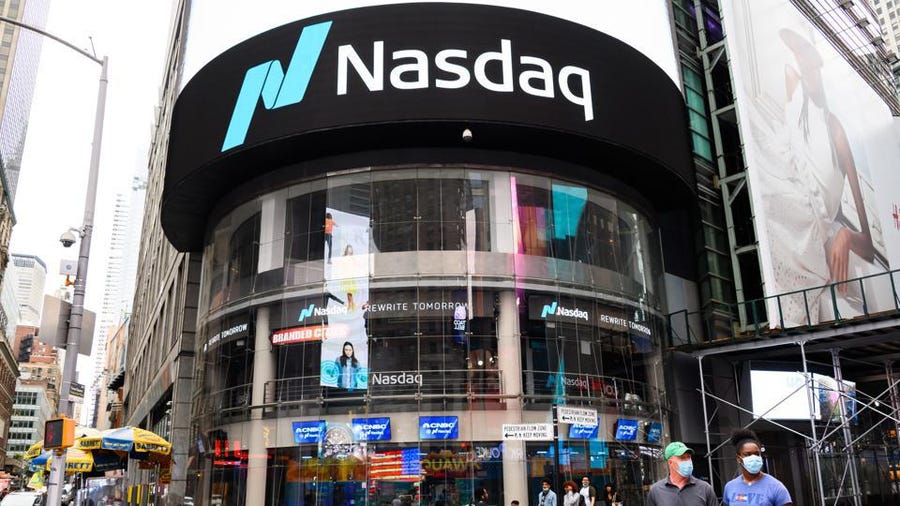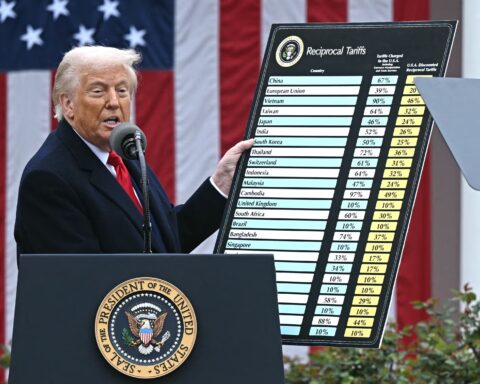We have talked in the past about Nasdaq-100 index construction and what happens when stocks are added to the Nasdaq-100.
One of the unique features of the Nasdaq-100 index is that it allows foreign Nasdaq listings into the index. Today, we look at what index inclusion does to the liquidity of those foreign-listed stocks (nine companies as of July 2021).
We find that the high profile of the Nasdaq-100, as well as the liquidity ecosystem around it, leads to materially better liquidity for those listings. As we have also studied, more liquidity translates to lower spread costs, which results in lower costs of capital for issuers.
The Nasdaq-100 inclusion really matters to foreign listings
Data shows that the average large-cap U.S. company turns its market cap over more than two times each year. In contrast, the average large-cap foreign companies listed in the U.S. tend to trade less than one-times their market cap each year (Chart 1). Although that’s a lot lower, it still gives those companies access to U.S. investors and capital and a turnover that is actually consistent with local listings in other regions. But what a U.S. listing of a foreign company usually doesn’t give is inclusion in U.S. indexes like S&P 500 and Russell 3000, which puts these companies on the radar for U.S. mutual and pension funds.

That’s because most indexes require a company to be “domiciled” in the U.S. to be included in a U.S. index. That usually means some combination of factors make the company clearly a U.S. entity. It includes factors like country of incorporation and where the head office is located. Primary listing is rarely a deciding factor. In contrast, the Nasdaq-100’s primary test to be considered for inclusion is being listed on the Nasdaq exchange. In fact, Nasdaq-100 rules allow for securities like ADRs with enough U.S. liquidity to be included. Stocks are then ranked based on market cap, and the largest 100 qualify for next year’s index. The list of annual additions and deletions is usually announced in early December, although the need for replacements can lead to additions during the year too.
The ecosystem surrounding the Nasdaq-100 adds new U.S. liquidity and investors
As the data in Chart 1 shows, even for large-cap companies, being included in the Nasdaq-100 provides a material boost to liquidity. An interesting question is “why”? The high profile of the Nasdaq index might help. Index tracking helps attract more investors.
Exchange-traded products tracking the Nasdaq-100 have an aggregate asset base of over $230 billion. That means for every 1% in Nasdaq-100 index weight, a company can expect to have around $2 billion of additional index investor interest. Although, as we know, index investors are long-term, low-turnover investors as most index funds only trade when index constituents change. That should mean they impact liquidity less than expected, but that also makes index funds some of the most consistent long-term holders of stocks. It’s likely the liquidity ecosystem surrounding the Nasdaq-100 helps much more.
That includes:The QQQ’s, one of the most liquid ETFs in the world, trading around $15 billion each day. Nasdaq-100 futures that trade over $176 billion each day across E-mini and Micro E-miniNasdaq-100 options that have average notional trading, based on option prices, of $25 billion each day.
We know that S&P and Russell indexes also have liquid ETF and derivatives markets, as well as more index trackers, but because foreign listings can’t get included in either, none of that liquidity helps. Instead, the majority of foreign companies would be held in indexes tracking MSCI and FTSE indexes.
Even then, usually the “local” listing is what is included in the index. Although U.S. listings are rarely included in those indexes, they may still offer a good hedge to U.S.-listed ETFs and futures tracking those offshore indexes because the U.S. listing trades concurrently (the same hours) with U.S. derivatives. However, we estimate the average ETF and futures trading on MSCI indexes adds to just $500 million each day, with a fraction of that translating into arbitrage in underlying constituents.

Spreads are tighter too
Based on how U.S. stocks trade, we would expect that more liquidity should lead to tighter spreads. Although, foreign stocks listed in the U.S. might work differently, especially if they can be arbitraged against a liquid home-country listing. The data shows that, for the large-cap stocks from Chart 1, the average and median spread (in basis points) are also lower for the foreign listings included in the Nasdaq-100 (Chart 3). That should translate to lower trading costs and lower costs of capital for those listings.

Nasdaq-100 inclusion matters
In this case study, the fact that the Nasdaq-100 index is different from other large-cap indexes matters a lot. The data on relative liquidity also shows that, especially for foreign companies, inclusion into the Nasdaq-100 index helps.
The reputation of the Nasdaq as a home for new economy stocks, with disruptive technologies and strong potential growth, combined with the liquidity ecosystem surrounding investors, is good for investors and issuers. It helps reduce the costs of trading, which adds to returns and helps attract new capital.
Robert Jankiewicz, Research Specialist for Economic and Statistical Research at Nasdaq, contributed to this article.






